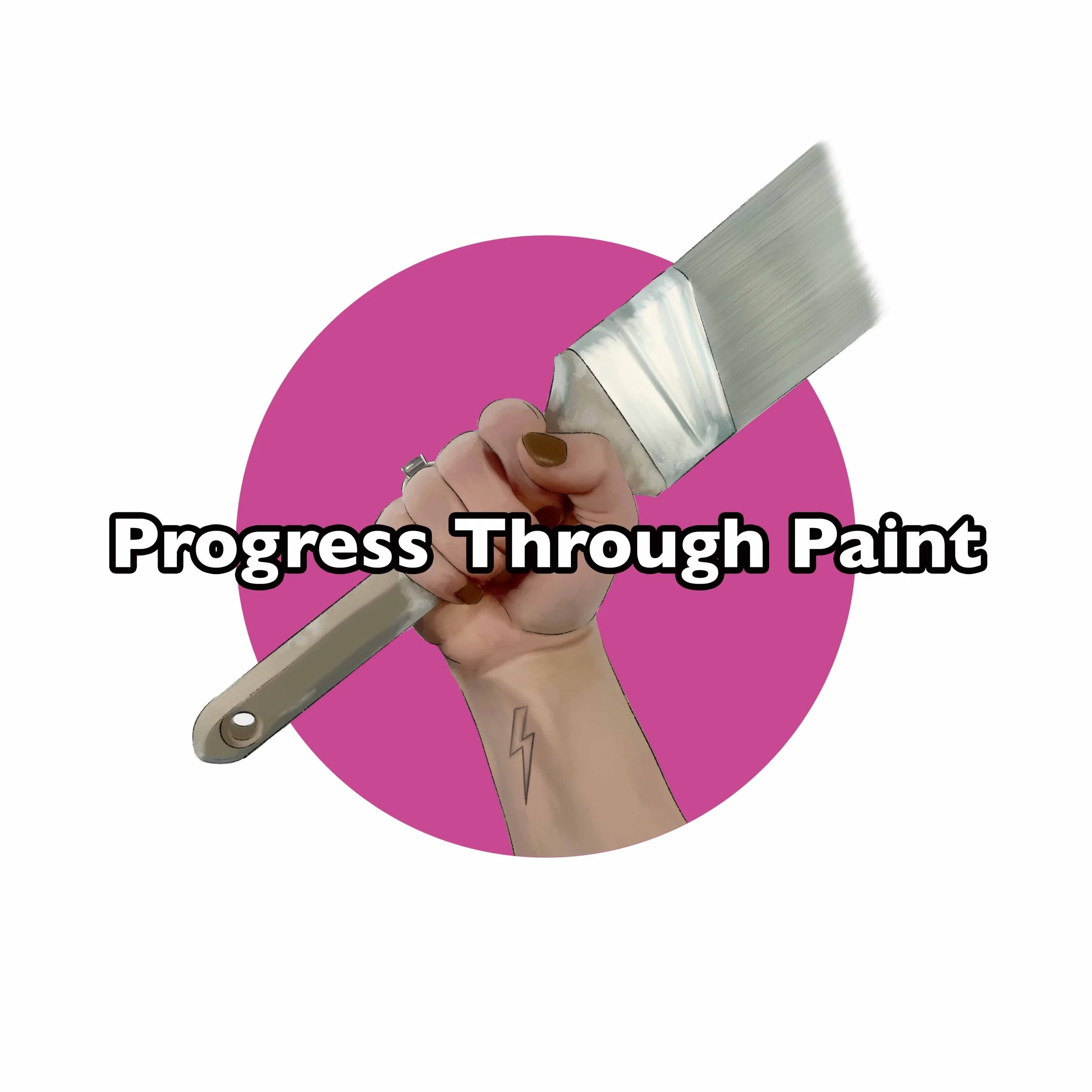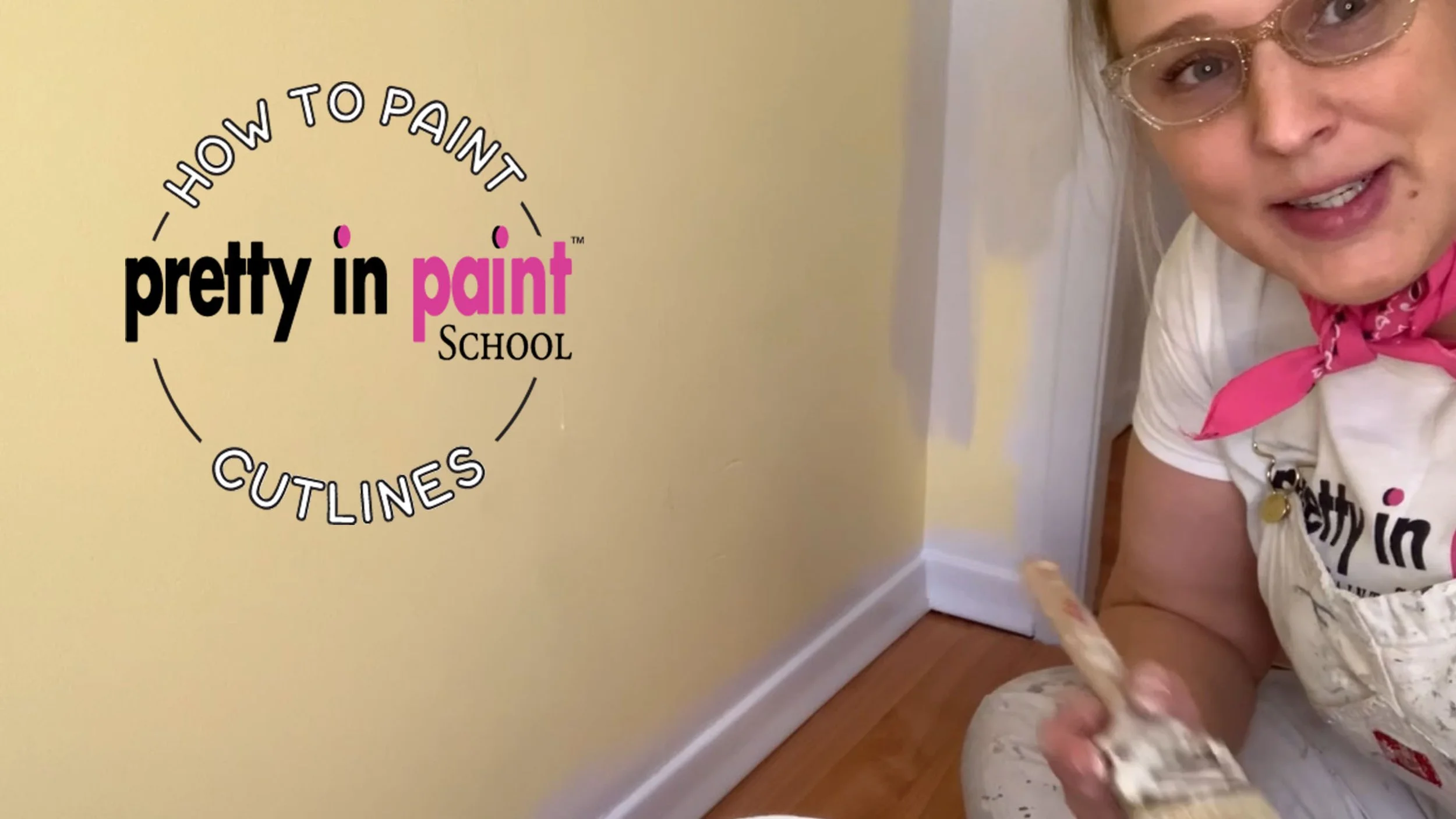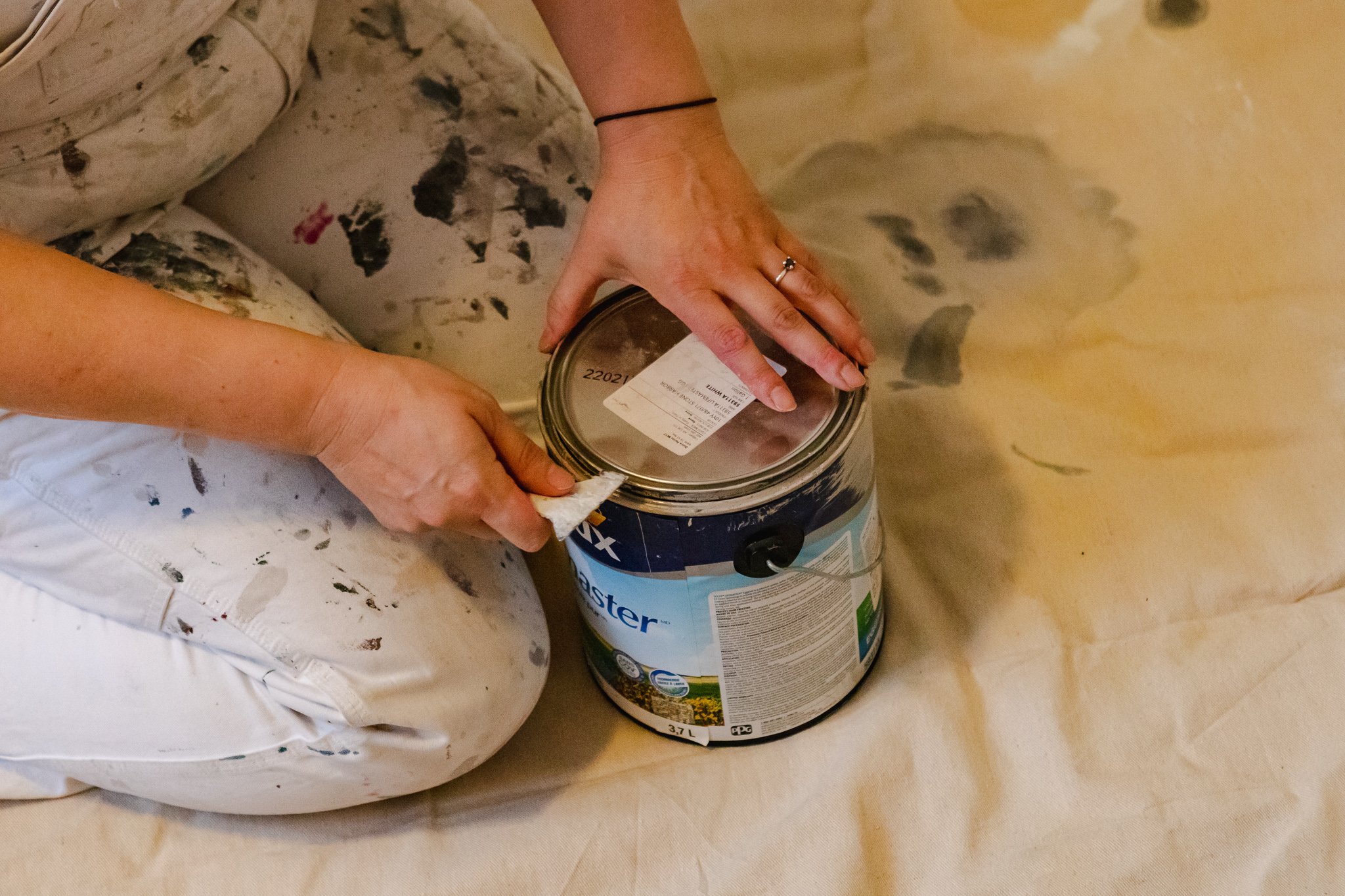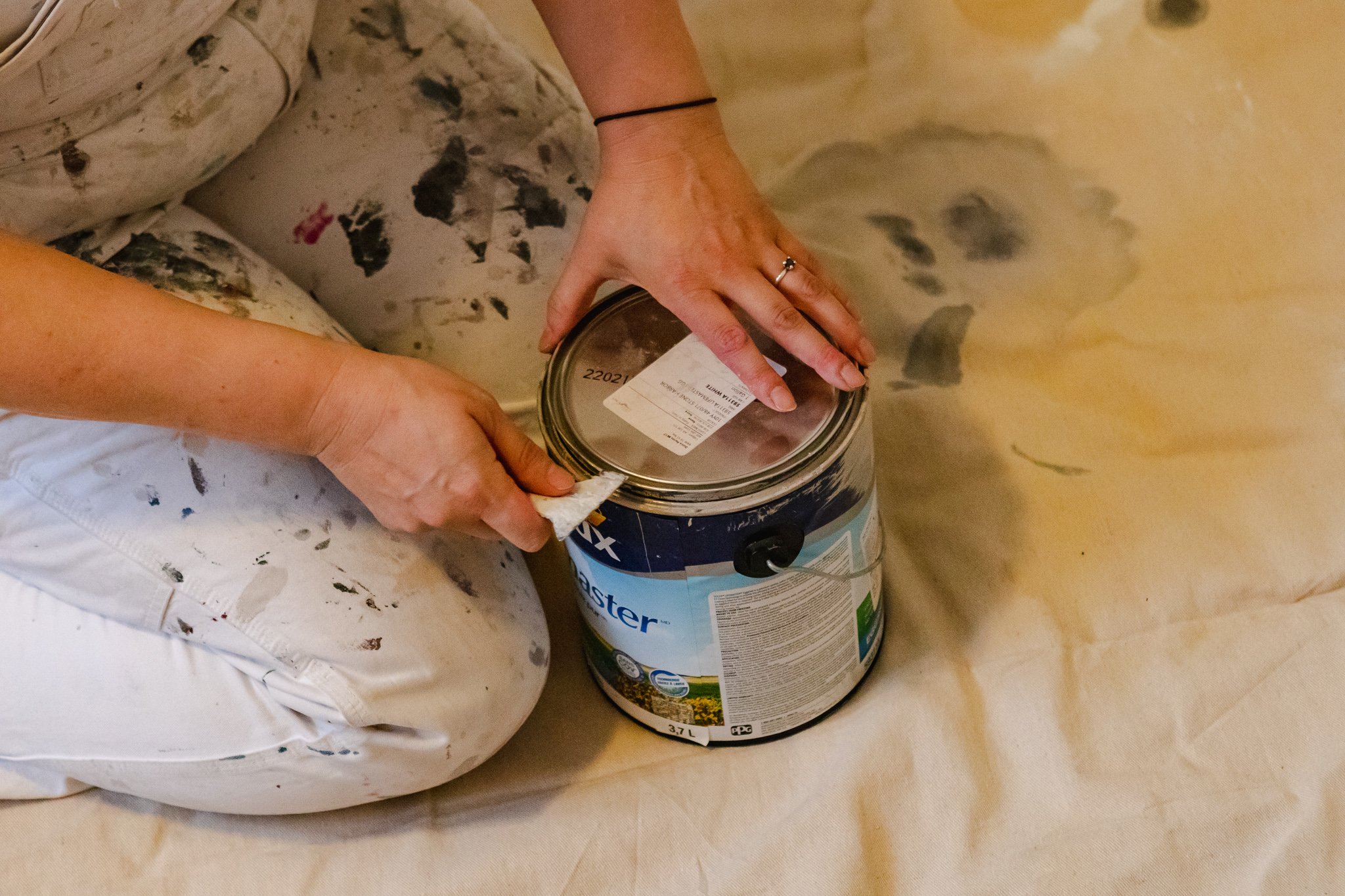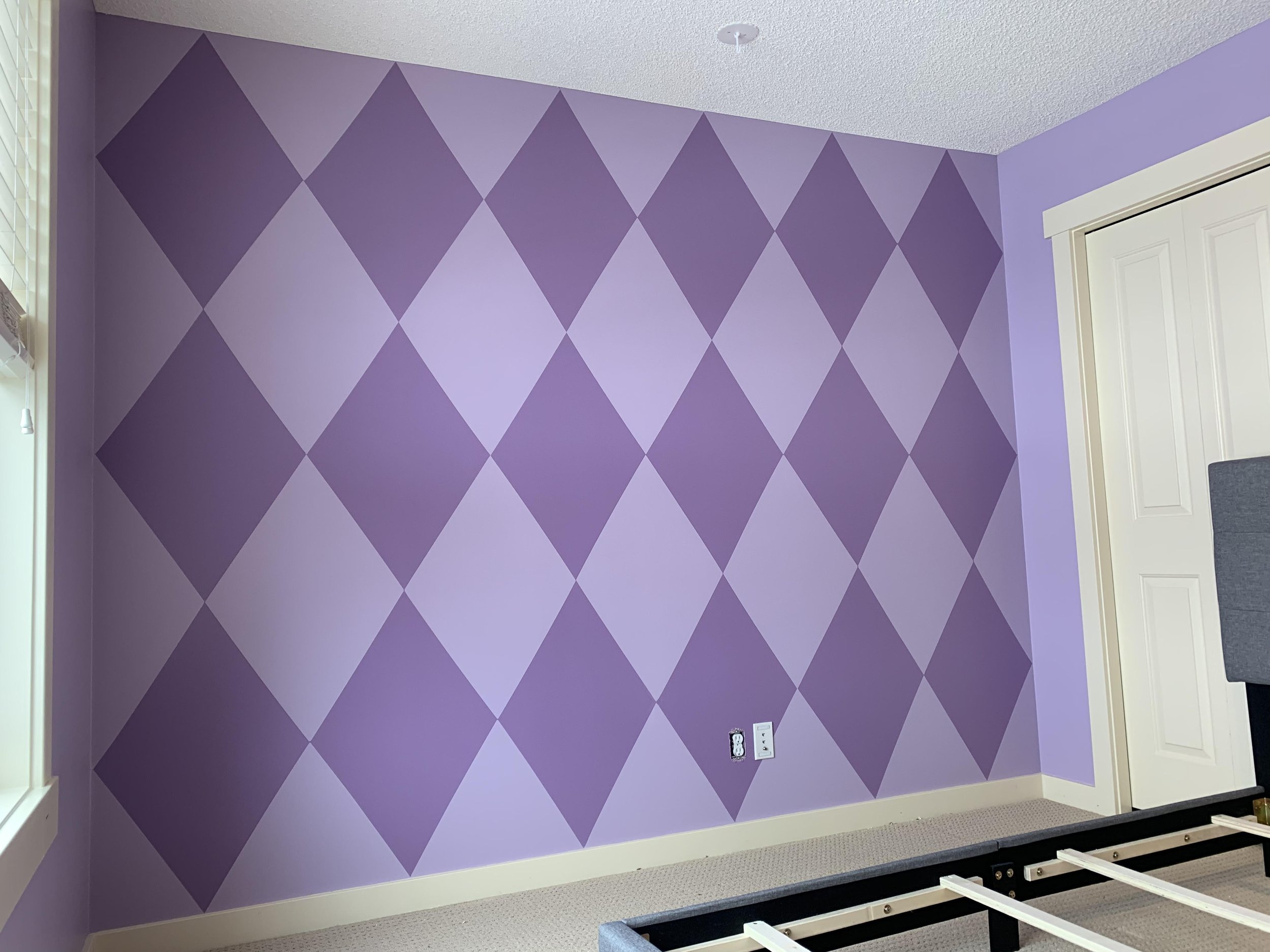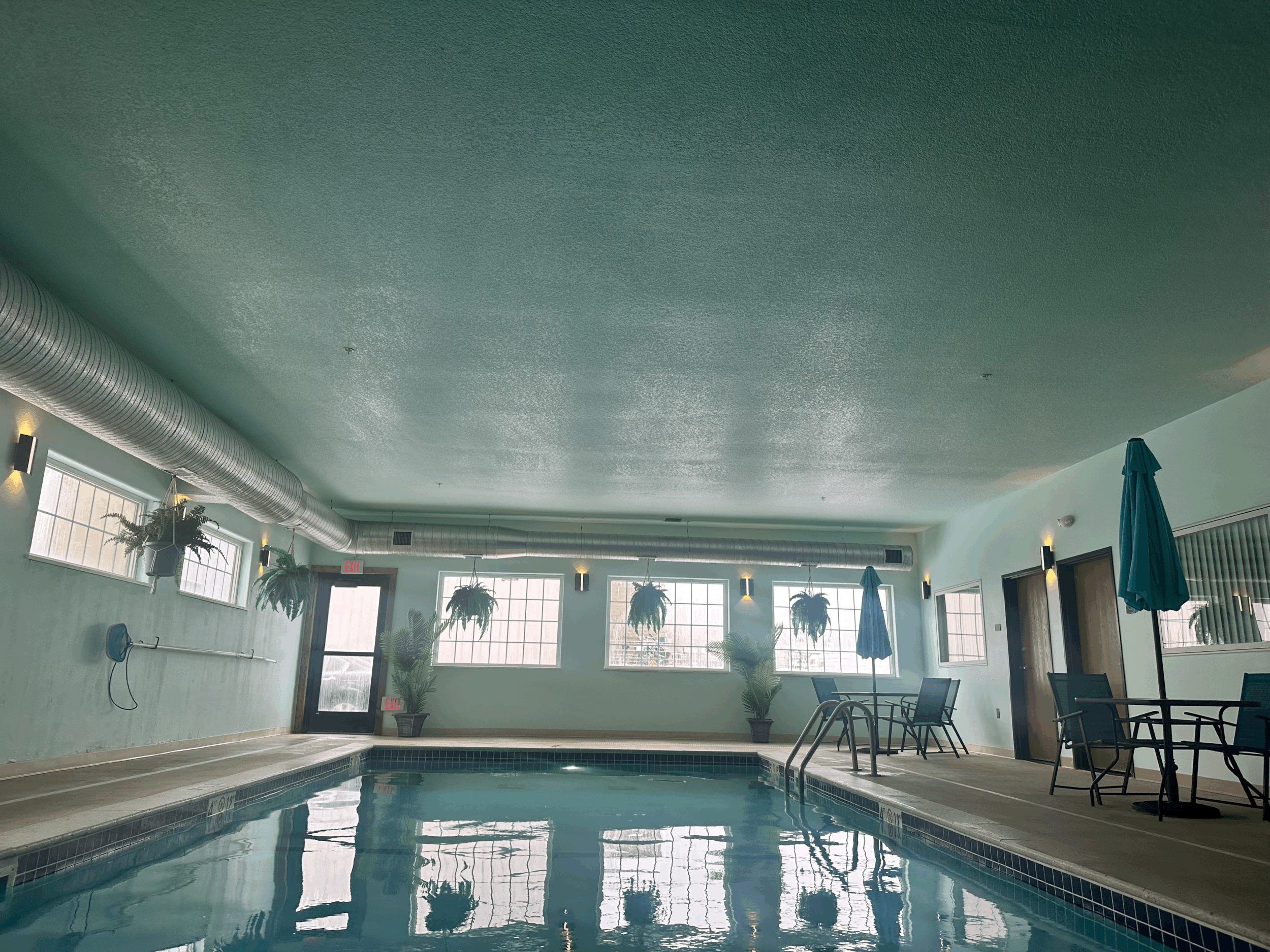
Everything You Could Want to Know About Painting
ALL BLOG POSTS

Got Something In Mind?
We are not kidding about how much there is here. Search for what you’re looking for and make it easy on yourself, will ya?
Featured posts:

ALL POSTS
Painting Apprenticeships for Women
Apprenticeships are a powerful way to break into the painting industry—especially for women looking for hands-on experience and mentorship. These programs typically combine on-the-job training with classroom instruction, helping you gain real-world skills while earning a paycheck.
In most areas, painting does not actually require an apprenticeship.
This means that you can get hired in a painting business without any previous experience - or paperwork.
If you are having a hard time getting hired with no experience, focus on any labor-type jobs on your resume and your attention to detail.
If you are looking for an extra leg up against the competition, consider an in-person paint training to give you the fundamental skills needed to let your employer know that you are already trained AND already fully committed to the trade,.
What’s more? Painting is also a remarkably easy trade to be self employed in. Huge portions of people need and will pay for painting in their homes. If you focus on exceptional quality, and an amazing customer experience, you can easily get started and “get the snowball rolling”.
If you’re thinking about giving it a go on your own, it is so helpful to join a community for women in paint that not only provides examples of all the paperwork and contracts you could want to get started, but also a community of other women in paint to ask questions!
To learn more about why Painting is A Top Trade For Women, click here!
How to Market Yourself as a Woman in the Trades
So you already know that painting is one of the top trades for women. You’ve made the move and have gotten into or are setting up your business for yourself.
What next?
Marketing isn’t just for big companies. If you’re a woman in painting, how you present yourself matters.
Tips for getting noticed:
Create a visual brand that reflects your style and values
Link up with a strong network: women in paint community exists
Use social proof: Share before-and-afters and testimonials
Network locally: Partner with realtors, designers, or stagers
Post consistently on Instagram or Facebook
Get listed in women-led business directories
Clients don’t just want a painter—they want someone they trust. Your brand helps them feel confident hiring you. Make sure you know and develop your competitive edge.
The Best Tools for Women in Painting Trades
Having the right tools is essential in any trade, especially in painting. These are some of the best tools for women looking to excel in painting:
Ergonomic Brushes and Rollers
Ergonomic handles are designed to reduce strain on your hands and wrists, making them ideal for long hours of painting.Lightweight Ladders
Ladders that are easy to carry yet sturdy enough for safety are a must. Choose a lightweight aluminum ladder that provides both portability and strength.Sprayers for Larger Jobs
When working on bigger projects, sprayers can save you time and effort. Look for lightweight models that are easy to use without sacrificing power.Paint Trays with Easy Grip
Paint trays with grips allow for better control, reducing spills and making the painting process easier and more efficient.Protective Gear
Make sure you have durable, comfortable gloves, non-slip footwear, and proper goggles or masks to protect yourself while working with paints and solvents.
Final Thoughts
Investing in the right tools can make all the difference in your performance and comfort as a painter. Choose tools that are not only effective but also cater to your needs as a woman in the trades.
Trades for Women: Why Painting Is a Smart First Choice
Of all the skilled trades, painting is one of the most approachable for women. Here’s why it’s a great entry point:
Low barrier to entry: No expensive schooling required. (NO apprenticeships needed in most areas either!)
Easy online or in-person training options
Quick skill development: You can learn and earn at the same time
Flexible hours and work environments
A strong network of community and mentorship
Physical but not punishing
Easy to transition into business ownership
For women testing the waters in trades, painting is a strong and rewarding first choice.
Learn more about why Painting is a Top Trade For Women.
Painting Trade School
Women in Paint: Learning the Trade for a High-Paying Career
While painting is often a learn-on-the-job trade, there are programs available to help you gain the experience needed to apply and get hired in the trade with confidence.
Great places to start:
our PAP (Paint Accelerator Program) with hands-on paint training for women with training programs located in Las Vegas AND Calgary, Canada
our PIP Army community - which features a live community, paint trade education for all pillars of your business, and example documents for every day in your business
Our PIP Army offers online work at your own pace courses for every area of your business, as well as community to ask questions as they come up to real professionals in the industry.
Our PAP (Paint Accelerator Program) helps you gain the fundamental skills stand out in a crowded market and positions you as a professional to help gain employment OR become a paint business owner (one of the best trades for women).
Can You Make 6 Figures in Painting?
You can absolutely make 6 figures in painting. While many painters start at entry-level wages, the ceiling is far higher than most people assume. Women painters can scale their earnings through:
Specialization (e.g. fine finishing, cabinetry, murals)
Owning a painting business (working for yourself!)
Working in high-end markets
Securing a Union position
Some painters hit 6 figures by combining skilled labor with smart business practices and niche branding. If you're wondering why painting is the best trade for women, read Why Painting Is the Best Trade for Women.
If you’re a woman who is considering getting in to the paint trade, we have several resources to help you get there.
If you’re a woman in the industry, and wondering how to get more freedom for yourself, make sure to get signed up for our #piparmy membership, where we help you with all the skills and improvements you need to get there.
The #PIParmy membership includes all the contracts, systems, and efficiency training you need to take you to make 6 figures in painting. We have live access to a community and network of women all across the globe, who have been in your shoes - and know what it takes to make magic happen.
How Much Do Painters Really Make? (2025 Data)
Painter income varies widely by region and role, but women who pursue specialized or leadership pathways consistently earn more.
Typical earning ranges:
Entry-Level Painter: $35,000–$50,000
Skilled Residential/Commercial Painter: $55,000–$75,000
Specialty Painter (Cabinetry, Fine Finishing): $75,000–$120,000
Painting Business Owner: $80,000–$250,000+
Union Journeyman Painter: $75,000–$110,000 (plus benefits)
Women who niche down or build a brand around quality often reach the top of the range faster because the market is hungry for reliable, detail-oriented painters.
Why Painting Is One of the Highest-Potential Trades for Women
Painting combines precision and creativity — two areas where women thrive. Compared to other trades, it also requires lower startup costs and offers faster time to income.
Advantages for women:
Low barrier to entry
Flexible scheduling
Easier to start part-time or side hustle
High demand in residential + property management markets
Naturally scalable into a team or specialty service
This is why so many women in the Pretty In Paint community hit their income goals sooner than expected.
Exactly How Women Are Reaching 6 Figures in Painting
There are four proven pathways:
1. Specialize in High-Paying Niches
Cabinets
Trim + doors
Interior repaints in high-end neighborhoods
Murals, faux finishes, color consulting
Specialists charge more per hour and close higher-value clients.
2. Build a Small Painting Business
You don’t need a big crew to hit big numbers — many six-figure women run:
A simple job schedule with flexibility to take the time off you need
Systemized workflows to maximize profitability during days on site
Even 1–2 helpers can help add extra income
Consistency + systems = profit.
3. Become the Go-To for Homeowners
Women painters often excel here because:
They communicate clearly
They show up reliably
Their work is detail-driven
Getting strong referrals and repeat clients can fill your calendar for months.
4. Move Into Leadership or Union Roles
If working as an “employee” tradesperson: Foreperson, estimator, project manager, or union journeyman roles often hit or exceed six figures.
How to Increase Your Painting Income Faster
Women who level up their income tend to:
Improve production efficiency
Use systems/contract templates
Raise prices confidently
Invest in training
Build a recognizable brand
Learn niche skill sets (cabinets, spray work, refinishing)
This is exactly what the #PIParmy membership helps you do.
If You Want to Make 6 Figures in Painting, Start Here
A good next step is to focus on:
Skill training
Business systems
Profitable service offerings
Brand positioning
Your earning ceiling rises the moment you build confidence in these four areas.
If you’re ready, join the #PIParmy and start building the toolkit that women painters around the world are using to hit 6 figures and beyond.
Stories from Women in the Painting Trade
Sometimes the best motivation is seeing someone like you succeed. This article shares stories from women who’ve entered the painting industry and made it work — whether by starting their own businesses, joining crews, or offering specialty services.
“I started painting part-time while raising kids. Within a year, I had my own business and flexible income.” – Tasha, 38
“I ended up in painting accidentally. I stayed because the earning potential and flexibility for my schedule was beyond anything else I could imagine.” - Tila, 32
“I never thought painting could become my full-time job, but now I have a waitlist for interior projects.” – Kendra, 27
Want to follow in their footsteps? Start with How to Start a Career in Painting as a Woman.
Other related articles: Why Painting is one of the Best Trades For Women.
Why Painting is one of the Best Trades for Women
Women are rising in every trade—but some roles are attracting more women than others due to flexibility, income, and work-life balance. Here is why painting is one of the top trades where women are finding serious success.
Painting offers the perfect mix of creativity, structure, and results. Women in painting often mention how satisfying it is to transform a room in just a day. It’s also highly portable—you can work solo, as part of a team, or even run your own business.
No heavy lifting
Visually satisfying
Low startup cost
Fast to learn, quick to earn
No apprenticeship required
Amazing community and mentorship opportunities
Why More Women Pick Painting
While all trades offer something unique, painting is one of the easiest trades to break into with the lowest barrier to entry. You don’t need an apprenticeship in most areas, and the work is scalable—perfect for side hustlers, solopreneurs, or full-time contractors.
If you’re just starting out and want support, training, or sisterhood—join us for Paint Training for Women. We’re building something for all women in trades, with painters leading the charge.
How to Start a Career in Painting as a Woman
Starting a painting career is more approachable than many people think. Here’s how you can begin:
Learn the Basics: Understand materials, surfaces, prep work, and finishes.
Build Your Toolkit: Invest in quality brushes, rollers, drop cloths, and safety gear.
Get Experience: Volunteer with a friend, work under a contractor, or take on small jobs to practice.
Promote Yourself: Set up social media, word-of-mouth referrals, and an online portfolio.
Many women also benefit from joining communities or mentorship groups to stay supported and connected. Check out Stories from Women in the Painting Trade for inspiration.
Related Post: Why Painting is the Top Trade for Women
Best Trades for Women
Thinking about a trade career? See why painting leads the way for women in trades, offering earning potential, flexibility, and growth.
While there are many trades women can thrive in, painting offers flexibility, high earning potential, and career growth opportunities unmatched in other fields.
Are you a woman looking to break into the trades? Painting might be the perfect fit for you. In this post, we’ll explain why painting is a top career choice for women, and why it offers the perfect blend of flexibility, creativity, and financial reward. Plus, we’ll point you toward valuable resources to help you get started.
Why Painting Is #1 for Women in the Trades
Painting is not just about adding color to walls — it’s a versatile, rewarding career that offers incredible flexibility and earning potential. Here’s why painting should be at the top of your list when considering trades:
High Earning Potential: Many women who start painting can quickly earn competitive wages, especially with experience and specialization.
Creative and Flexible: Painting allows you to use your creativity while still having the flexibility to set your own hours and work on diverse projects.
Low Barrier to Entry: You don’t need years of schooling or extensive certification to get started. With the right training, you can begin your career quickly.
Endless Demand: Whether it’s for homes, businesses, or new construction, painters are always in demand. This stability makes it a great career option for long-term growth. AND it’s unlikely to be taken over by AI in any of our lifetimes.
Get Inspired: Real Stories from Women in Painting
Still unsure if painting is the right choice for you? Real Stories from Women in the Painting Trade offers a glimpse into how other women have found success in the industry. Hear firsthand accounts of how they got started, the challenges they faced, and how they’ve built fulfilling careers in painting.
How to Become a Painter as a Woman
It’s never too late to start a career in painting. But where do you begin? We have a ton of people who have gotten their start with us in our PAP (Paint Accelerator Program) and/or the #piparmy.
Why Women Are Thriving in Painting
There’s no denying that painting is one of the top trades for women, and for good reason. It’s an inclusive industry that’s welcoming more and more women every year. In fact, there are growing networks and resources designed specifically for women in painting, like our #piparmy, where you can connect with other female painters and find support throughout your career.
Explore More: Why Painting Is the Best Trade for Women
If you’re ready to explore why painting is the ideal career for women, be sure to check out our in-depth article Why Painting Is #1 for Women. This piece dives deep into why painting offers so much potential for women and why it's a career worth pursuing.
Conclusion
Painting is one of the most rewarding, flexible, and financially stable trades for women, and it’s only growing in popularity. Whether you’re looking to get started or seeking ways to advance your career, there are resources and communities that can help you succeed. Don’t forget to explore our related articles for more insights and inspiration.
Related Articles:
Is It Ok to Paint In Hot Weather?
With summer here you may think any day is fair game to paint the exterior of your home. I can tell you from first hand industry experience, that is simply not true!
A beautiful exterior done by a #piparmy member in 2020!
Siding: Benjamin Moore - Steel Wool (2121-20)
In fact, in my business we have had more issues with paint/stain being applied when the temperature is too HOT than too cold.
Paint manufacturers (especially in Canada) spend a LOT of time with their formulas to make sure that the exterior paint season can be extended as long as possible, and paint can be applied outside in the lowest temps possible.
So what happens if it I paint when it’s too hot?
The most common failure that occurs when paint has been applied to a surface that is too hot to receive it is that it the top of the layer will dry too quickly, creating a gel in between the layer and the surface that does not cure properly and will *usually* peel during/after the first winter.
Check out this deck that we stained in my first year of business in the paint industry. It was a gorgeous sunny day, the perfect temperature when we started. However, by the end of the day, the surface temperature of the deck had become too hot unbeknownst to the staff.
Sure enough, the next May I received a call from the client that the stain had failed over the winter. We went out and had to redo the prep and re-stain the deck for them.
So how do I know if it’s too hot to paint outside?
When painting exterior it’s extremely important to make your game plan according to the weather. You can plan to work on sides that are out of direct sunlight and work your way around. You can plan to get things done very early in the morning before the sun gets too hot. You can plan to NOT work on days that you know are too hot.
You can test your surface temp with this handy tip!
Simply place your hand on the surface to be painted prior to application. If you can barely place it there for a second, it is without a doubt, TOO HOT!
You must keep in mind that the surface also requires enough cure time BEFORE it reaches that temperature to ensure you have no problems down the line.
Try a test at the highest temperature the day before, and you can consider painting at that same temp the NEXT DAY, if the surface feels cool enough to touch.
24 hours of cure time should be allotted when applying STAIN (especially outside), before exposure to any extreme elements (rain included). You should always allow at least A MONTH before exposure to FREEZING temperatures (overnight included).
How to Paint Stucco like a Professional Painter
You may not realize that painting your stucco is an option, but painting stucco is an easy and cost effective way to update the look of your exterior without a huge investment.
The first step when painting the stucco on your house is to make sure it is nice and clean. You’re likely going to need a little more pressure than a garden hose can offer. When we are prepping stucco for painting, we are usually using a gas powered pressure washer with around 2500 psi. We start the pressure wash at the top of each wall and slowly work our way across and down to ensure no dirt actually gets pushed back up into the grooves. We want to make sure we are staying a safe distance away from the stucco as to make sure not to damage it.
After the stucco has been washed and has had plenty of time to dry out (time varies depending on the weather at the time), it is time to fix any patches of the stucco that may have cracked or damaged over the years. If the fixes are minor, grab some stucco patcher from your nearest home improvement store, as well as some putty knives and get to work! It is quite easy to patch little stucco sections so that they blend on your own. If your home has some bigger sections to be repaired, or a trickier stucco pattern to mimic, it might be time to call in some pros.
Once all the patching is done and had time to cure, it’s time to paint your stucco! The paint for the stucco can either be applied by brush and a really fluffy roller or by spray (likely with backroll). Make sure to choose a paint that is high quality and possibly an elastomeric. Chat with your trusted paint store rep to decide which option is right for you and your home. When you do exterior painting, it’s typically not the best place to cheap out on paint. A high quality product will really pay off with the durability of the paint and extend the life of your exterior paint job.
If you have questions relating the stucco painting or exterior painting, be sure to check out all articles related to the topic on our site.
If you’re not up for the challenge yourself, contact us for a referral from our professional painting network.
How to Paint Straight Lines
I filmed this a couple years ago and IT SHOWS haha.
Another piece of content I filmed early on when I was really just STARTING to learn how to film, edit, how to even talk to a camera for that matter :’).
BUT, this instruction HOLDS UP. Not only does it hold up, it’s a total approach that shows you how to cut in almost every angle that you will need to know inside:
-how to paint along ceilings
-how to paint around trim
-how to cut baseboards
-how to cut angled corners without tape
-how to cut without tape
-how to paint without tape
I chose the title “How to Paint Straight Lines” because THAT is apparently the top searched thing that has been missing from this page, and also what leads people here the most.
If I didn’t know that, I would have labeled it what the file has been called: “How to do Cut Lines”, which may have reached less of you!
More on my hate for having to learn technology to share my tips with you for a later episode ;)
This video has been IN PROGRESS for far too long and too many visitors have missed out on its valuable info, BUT alas, it is HERE!
Check it out and let me know what you think in the comments. :)
How to Open A Paint Can
Let me start this posting by thanking the mighty Google for telling me what YOU, the people of the internet WANT & NEED to see!
Apparently this is a trending search, and the only thing I was going to have on this site initially about opening a paint can was the handy dandy tip I will show you after we cover just HOW to open a paint can in general.
Let me second of all thank our wonderful photographer for capturing this photo before I knew I needed it!
It’s not the perfect photo, but I think it gets the job done. In my hand is a 5-in-1 paint tool. You totally have one of those, right? Because of that conversation we had about making sure you have all the right gear to do the job, so you can get back to doing things in your normal life that you like doing just a wee bit more, faster? If you haven’t scored it already, make sure to pick up our FREE handy dandy Gear Guide.
In this case, using the right tool is just SO much easier than anything else you can “make due” with (and trust me, I have BEEN THERE). AND you can score these often at the local dollar store near you for $1-2!
This tool is specifically designed for painters and the long flat side is PERFECT to stick on between the lid and sides to lift off with just a few turns of the wrist! Simply place the flat side in one of the grooves as shown above and turn your wrist to start to lift off a side of the lid. Repeat in as many spots and as many times as necessary to remove that sucker!
I promise I will take some more photos and/or video if you tell me we need more guidance on this one, so don’t give up on me just yet!
Let’s talk about that other cool tip I talked about sharing above for a minute.
Again, ANOTHER reason to make sure to have this tool. (I’m not getting paid a commission on sales of these things either…I WISH!)
The first time you remove your paint lid from the can, it is best advised to take the OTHER side of this tool and use your hammer (also handy, right?) to make four holes around the outside lip of the can. This helps any paint buildup fall straight back into the can and helps make sure your lid can and will go back on every time you need to put it back on during your project, and will also make it a lot easier to open too!
How to Get Paint Out of Carpet
Whoopsies! You’ve taken on the very rewarding task of painting your own space. But unfortunately you’ve been rewarded with a little surprise at the end that must be taken care of next.
NOT TO FEAR! You can now also brag to all your friends how easily you got that little surprise taken care of as well with such ease!
OR you can pretend like it never happened…we didn’t see anything! 👀👀
Let’s start by saying there are two different ways to go about getting the acrylic paint out of your carpet.
the paint is still wet
the paint has dried
If the paint drip on your carpet is still wet, it’s a pretty easy fix.
Take the rag out of your pocket (because a pro ALWAYS has a rag with them, just in case 😉), go and wet a corner of it down with the most amount of water it can handle without dripping everywhere. Take your rag back to the spot and squeeze it some water onto the spot. Now take the dry part of your rag and gently try to rub/pull the paint out of the carpet not that it is super diluted. Repeat as necessary.
How to get DRIED latex paint out of your carpet is MUCH MUCH harder….
Just kidding.
We typically get the job done with this handy dandy product I discovered many many years ago that is like a miracle at removing paint from soft fabrics of many kinds.
Disclaimer: always test a small patch in an inconspicuous spot before committing, ESPECIALLY if it is in a really obvious and/or high traffic spot.
The biggest issue we run into with this product is it makes things SO CLEAN. So therefore if your carpets are a little behind on their yearly steam clean (a thing that everyone here does, right? Because we are professionals?), your paint mark will be gone, but you will now be left with a VERY obvious SUPER CLEAN area surrounded by “not so clean” carpet.
Anyways, the use on this is super easy. Just apply a tiny amount and I MEAN tiny amount to your dried paint drip. Let it sit for about 20 minutes and then use your rag to gently move the carpet fibres around until you have knocked the paint loose enough to be removed. Repeat as necessary.
It is important to use just a tiny dab of this product when you apply, because it is highly concentrated and you can be left with quite a sudsy mess if you accidentally drip too much out. After you have removed the paint and are left with a bit product in the area, or if you have accidentally used too much, your best bet is to do the water/cloth step as we talked about above to make sure there is no residue left behind. Just a nice fresh, paint-less spot!
How Much Paint Do I Need?
A common question we are asked by DIYers in the wild is “How Many Gallons of Paint I will need?”
The answer to this question of course depends on your project and what surfaces you are doing, what color they are vs what color they are going, if it is an “extreme” color change, etc.
Before we get started, let me also tell you I can help you get contractor pricing for LIFE here!
The one thing I can tell you for sure about how much paint you will need is that it’s usually not anywhere close to what the paint store has quoted you. And that sh*t is too expensive to just go buying extra all willy-nilly like that!
Our general rule of thumb is that 1 gallon will do 2 coats of the walls of 1 “average” sized room. Average size may depend on your region and is subject to individual interpretation of course :)
A bathroom will typically take less, and of course closets even less so! Rooms with taller ceilings or lots of different walls you can bank on slightly more as well.
Rooms that need more than 2 coats (ex: rooms going anything to white) will need more than 1 gallon for walls.
We usually take the number of average size rooms and then add in our bathrooms, closets, hallways calculation by discretion.
How many gallons of paint you will need for trim is subject to the same rules; fully dependent on how much trim you have (baseboards, window/door), and the number of coats you will need to do.
A common “trim” service we provide to our clients is a “1 coat refresh” on baseboards, whether it be to prepare a home for sale or for the client’s current enjoyment. This service generally will require simply one coat of paint. If we are tackling a condo project and doing all trim and doors, we may only need 1-2 gallons there as well. If you’re unsure of which paint is best to use on your walls or trim, make sure to get our free GEAR GUIDE.
How many gallons of paint you will need for your project also highly depends on the method of application. If you are a brave enough soul to venture into spraying your own project (I do not recommend this for most projects for DIYers), you will need a pretty decent amount more paint than if applied by brush and roller, in most cases.
How many gallons of paint you will need to paint your cabinets again relies heavily on how large your kitchen or cabinet area is, and how many coats you will need to do. For example, in the kitchen above, we did two coats of primer to ensure that no tannin from the oak would seep through into the finish coats. We sprayed this kitchen, so the number of gallons was higher than it would have been if we applied the paint by brush/roller.
If you are looking to paint your cabinets, make sure to check out our lesson on “How to Paint Your Cabinets” here!
We discussed how expensive each gallon of paint can be, and if you’re here, chances are you already know!
What if I told you there was a way to get access to our contractor rates on all of your paint purchases going forward? Make sure to check out our Golden Ticket.
How to Paint An Argyle Wall (Diamond Wall)
Click on the picture below for step by step instructions on how to complete this awesome argyle patterned wall!
Watch Video Here:
Additional Pictures of Another Room:
What Sheen of Paint Should I Use On Ceilings?
On any surface you paint, it is important to consider what sheen of paint you should use.
What sheen of paint should you use on your ceilings? The answer to that question can differ according to each unique situation.
In the picture above and below, we see a ceiling above a pool that has been painted with a semi-gloss sheen.
In these photos you can clearly see every deficiency in the ceiling and workmanship.
The semi-gloss paint was likely chosen as a way to protect the ceiling from potential splashes and accruing water damage.
Chances are, you would not want to choose this sheen to paint most of the ceilings in your home.
It is used most often on flat ceilings in bathrooms in homes for the same reason; to prevent mold and mildew from growing.
In the picture below, the right sheen was applied, but just applied very poorly or attempted to be “touched up” and you can see how it does not look right.
(Below) is a ceiling from the same home where someone clearly tried to do a “touch up” to this spot in the dining room.
The same rules apply for ceilings as do for walls, but generally worse. You can not plan for a touchup to your section unless it falls under very strict guidelines. You generally must still have the same batch or gallon of paint as was used originally. And even then, the surface color can change over time. You must always plan to paint the full surface, “corner to corner” as we say, to achieve professional results.
This dining room would have had to have been painted all the way out to the walls. It is impossible to match a ceiling paint, all ceiling paints have slightly different formulas.
How to Clean A Paintbrush
This video demonstrates how to wash a paintbrush with latex paint on it.
***You should NEVER wash a paintbrush this way if it has been used with oil-based or other kinds of paint***
How to Match Paint
AKA How to Take A Sample
Ever needed to know what color is on your walls but no longer have the can and have no idea what it is?
You can take a sample to get matched at your local paint store using the directions below.
Disclaimer: If you are hoping this method will allow you to do “touchup” spots on your walls, it is very unlikely that you will be able to successfully do that as the sheen may be different than the product last used (yes, even if it’s egg-shell vs. egg-shell as every company and product can have slightly different sheens under the same definition). This method should get you a close enough match that you can do the whole wall (Corner to Corner) without being able to tell the difference with the wall next to it. Of course make sure your match is correct at the paint store as well before leaving. Ask them to show you the match on the sample to gauge it’s accuracy. Look at it from different angles in different lighting to be sure.
Happy painting!





